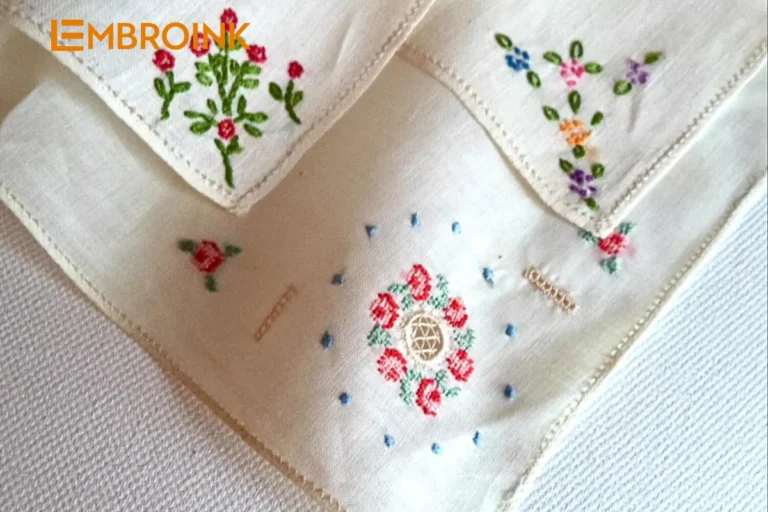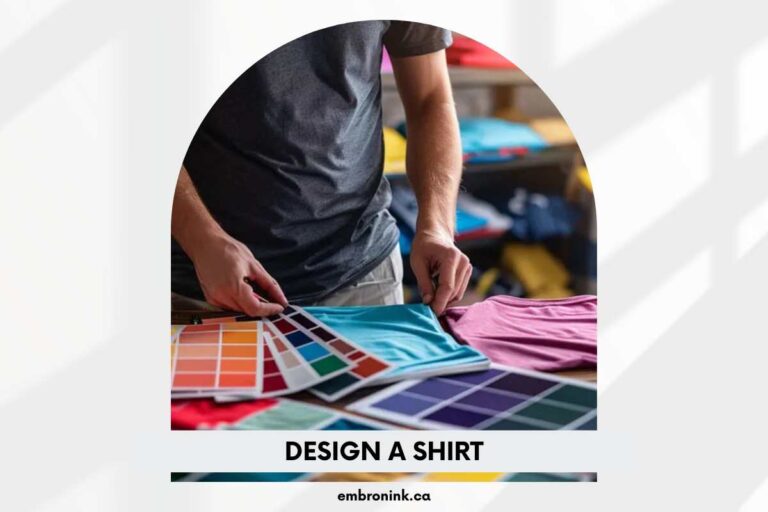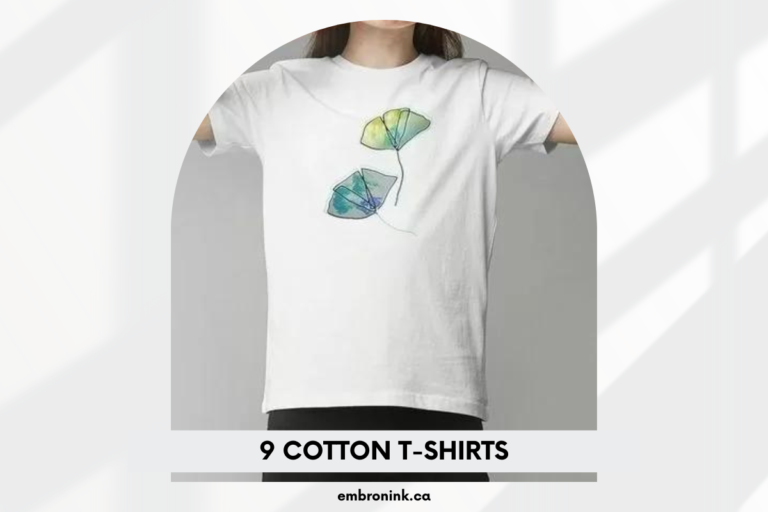How much does it cost to embroider custom aprons?
In today’s competitive market, personalization has become a key element in distinguishing products and services. Embroider custom aprons are a popular choice for businesses and individuals looking to add a unique touch to their attire. However, the cost of custom embroidery can vary widely depending on several factors. This article, EmbroInk will explore the various elements that influence the price of embroider custom aprons, helping you understand what to expect and how to budget for your specific needs.
Essential information about aprons
The apron has now transcended the confines of the kitchen and has made its way into everyday social life. We can easily spot them in every food and beverage service establishment. Knowing more specifics about them makes it easier to order custom aprons as needed.
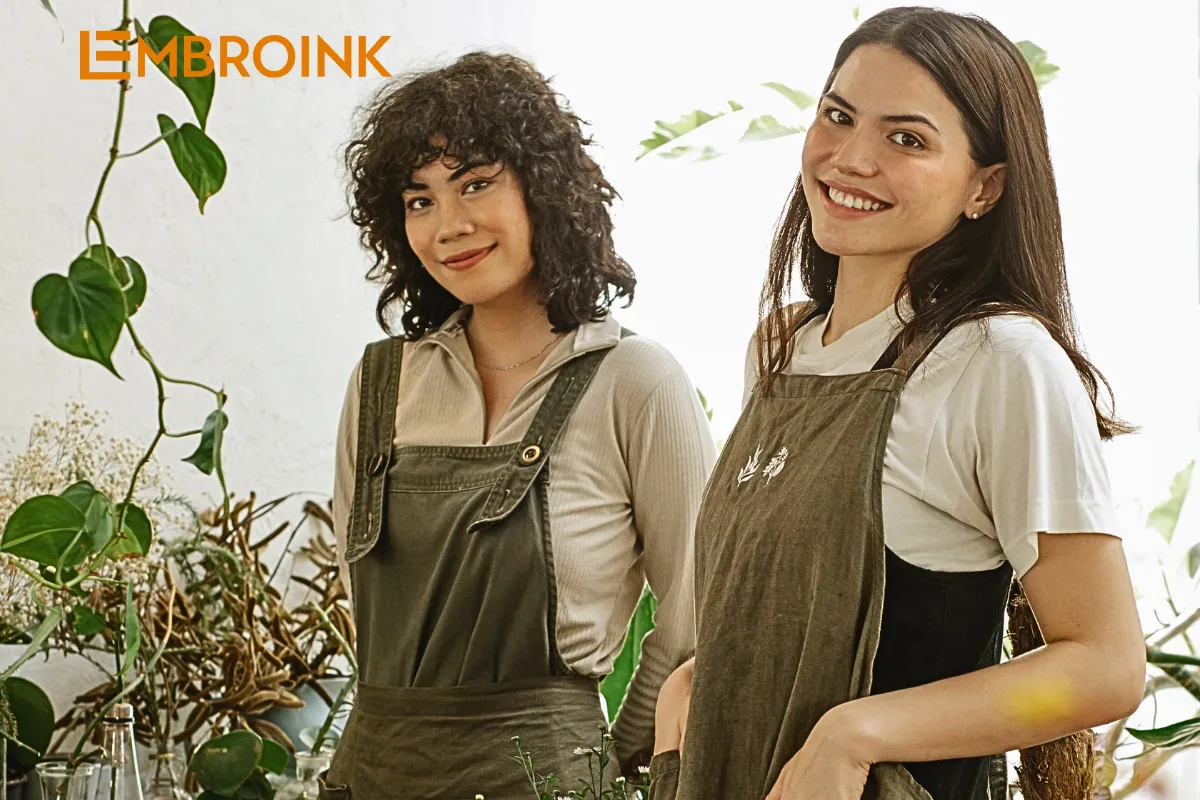
What are aprons used for?
Aprons are a type of garment worn over regular clothing to cover and protect the front of the body. They serve various purposes, making them an indispensable accessory for safeguarding clothes from external stains and spills. Despite being an accessory, aprons are meticulously and thoughtfully designed, often considered a type of apparel crafted with care.
Aprons are commonly used as uniforms in settings such as restaurants, cafes, hotels, and more. Each apron’s color and design can reflect the brand and operational goals of the business. Depending on the established style, aprons are designed to align with themes, forms, and preferences, unifying individuals into a cohesive group that demonstrates the strength and solidarity of an entity.
The structure of aprons is diverse, tailored to the specific tasks they are meant to facilitate, ensuring that they effectively serve their intended purpose.
The origins of aprons
Aprons have a long and storied history, with evidence suggesting they were widely used in ancient civilizations. In Egypt, aprons were worn during important rituals and ceremonies throughout the year. The term “apron” itself comes from the French word for a small decorative tablecloth, similar to a placemat.
During the Middle Ages and the Renaissance, aprons became increasingly popular and were a staple accessory in daily life. Everyone from barbers and chefs to housekeepers wore aprons to protect their clothing while working. Women of that era also wore aprons to shield their expensive garments from damage.
By the 19th century, with the rise of fashion and the mass production of affordable clothing, the primary function of aprons shifted away from protecting expensive attire. However, aprons remained popular due to their versatility. They helped wearers avoid heat, blood stains, dirt, and other contaminants.
Today, aprons have become an indispensable part of everyday life, work, and activities. Their functionality and historical significance continue to make them a valuable accessory across various settings.
Popular types of aprons used today
First, aprons come in a variety of styles, depending on the requirements and nature of the job. Currently, the three most popular types on the market are:
- Short waist apron: Designed to extend from the waist to mid-thigh, this type of apron features a waistband tie and often includes a small front pocket for convenience. This style is commonly used by waiters or chefs because it is lightweight, compact, and facilitates easy movement.
- Long waist apron: Extending from the waist to the knees, the long waist apron also has a waistband tie. It is usually paired with a uniform shirt embroidered with the store’s name and logo. This design is typically worn by waitstaff or bartenders, offering both protection and a professional appearance.
- Bib apron: Covering the entire front of the body, the bib apron features a neck loop and waist ties. It serves to protect the wearer from dirt and grease during work. Chefs and cleaning staff often wear this type of apron to safeguard their clothing and themselves from contaminants encountered on the job.
Next, the materials used to make aprons are very diverse, each with its own advantages and disadvantages. The most commonly used fabrics are kaki, kaki cotton, and kate. If the requirement is for good sweat and dirt absorption, kate fabric should be chosen. For comfort and lightness, kaki fabric is a suitable choice for making uniforms. Each material offers a unique feel and function, so the choice must be tailored to the specific demands of the job and the working environment.

Types of fabrics for apron
Kaki fabric
Kaki is a durable and attractive material, making it a suitable choice for apron manufacturing. Traditionally green, modern dyeing technology has expanded its color range, allowing for more varied and eye-catching designs. Kaki fabric maintains its shape well, comes in various price points, and offers high breathability for comfortable wear. Additionally, it resists wrinkling, preserving the aesthetic appeal of the garment.
Despite these advantages, kaki has some drawbacks. It is best suited for simple, uncomplicated apron designs and may not provide a lightweight or fluid appearance.
Denim and jeans fabric
Made from cotton fibers, denim and jeans fabrics are excellent at absorbing spills and stains. Various denim types, such as stretch denim, cotton denim, poly-cotton denim, and recycled denim, are used in apron production. Denim and jeans lend a sophisticated and clean look to aprons, with their characteristic blue hue being popular among businesses for its distinctive style. These fabrics are commonly used in bars, restaurants, and upscale hotels.
Denim and jeans are easy to clean, durable, and breathable, with excellent heat resistance, making them ideal for jobs involving exposure to high temperatures. However, they can wrinkle and deform over time, though their high durability often outweighs these disadvantages.
Kate fabric
Kate fabric is widely used for making shirts and is also popular for aprons due to its numerous advantages. It comes in various colors and patterns, allowing for diverse apron designs. Commonly used types of Kate fabric include Kate silk, Kate check, Kate stripe, Kate Ford, Kate polin, and Kate American. Kate fabric’s pricing varies depending on the composition, offering multiple choices for apron manufacturing.
While Kate fabric is thinner than kaki, its major drawback is poor heat resistance, making it unsuitable for aprons used in high-temperature environments.
Canvas fabric
Canvas, also known as cotton duck, is a sturdy and aesthetically pleasing material despite its rough texture and plain appearance. It is cost-effective, durable, and provides excellent water resistance, making it ideal for protecting against grease and harmful chemicals. Canvas aprons are particularly suitable for vintage or classic-themed restaurants and eateries. Although inexpensive, canvas can be blended with other natural fibers to achieve a softer texture, which can increase its price.
Simili faux leather
Simili, a synthetic material, is used to make luxurious aprons. It encompasses all types of faux leather available on the market today. Despite being made from synthetic materials, Simili boasts a sophisticated appearance, making it suitable for upscale settings. It has a shiny, water-resistant surface and is easy to clean with a simple wipe. However, Simili has drawbacks such as limited breathability, making it uncomfortable over prolonged use. Additionally, it has poor heat resistance, so it is not recommended for chefs or those frequently working near open flames. There are also environmental concerns related to its production process.
Waterproof fabrics
Waterproof fabrics are designed to protect the wearer from liquids. Some commonly used waterproof materials for aprons include:
-
- Nylon Fabric: Often seen in salons, nylon aprons protect against harmful chemicals such as hair dye, perm solutions, shampoos, and nail polish. Nylon is easy to clean and highly durable.
- Polyester Fabric: Polyester is a popular waterproof material known for its durability and variety of colors and patterns. Polyester aprons are affordable and suitable for those who do not prioritize fabric details.
Aprons have become an indispensable part of everyday life, with modern, diverse designs meeting various needs. To create an appropriate apron for specific tasks, it is essential to choose the right material to ensure safety and maximize functionality.

How much does it cost to embroider custom aprons?
The cost of embroider custom aprons can vary based on several factors, including the following:
- Quantity: Typically, the more aprons you order, the lower the cost per apron due to economies of scale.
- Design complexity: Intricate designs or multiple colors may increase the cost compared to simpler designs.
- Apron type and material: Different types of aprons (e.g., bib aprons, waist aprons) and materials (e.g., cotton, polyester) can affect pricing.
- Embroidery size: Larger embroidery designs generally cost more than smaller ones.
- Additional features: Special requests such as custom colors, specific thread types, or additional embellishments can also impact pricing.
To get an accurate cost estimate, it’s best to contact an embroidery service like EmbroInk directly with details such as the number of embroider custom aprons, the complexity of the design, and any specific requirements you may have. They can provide a quote tailored to your needs and preferences.
The necessity of embroider custom aprons
In today’s food and beverage business, aprons are indispensable accessories. Therefore, establishments always have a demand for embroider custom aprons. However, many people may not fully grasp their importance in business operations.
Aprons protect the safety of staff, especially chefs, shielding them from heat and harmful chemicals. Using them as uniforms also contributes to a positive impression on customers, creating a neat and professional image that enhances the establishment’s appeal.
Uniformity in branding also adds professionalism, enhancing aesthetic value. Customers feel more comfortable and reassured when using dining services.
Moreover, embroidering the brand logo on aprons serves as free advertising. It aids in easy recall and recognition of the brand, thereby increasing competitiveness in the market.
Therefore, investing in embroider custom aprons not only ensures hygiene but also builds brand identity and enhances customer experience positively.
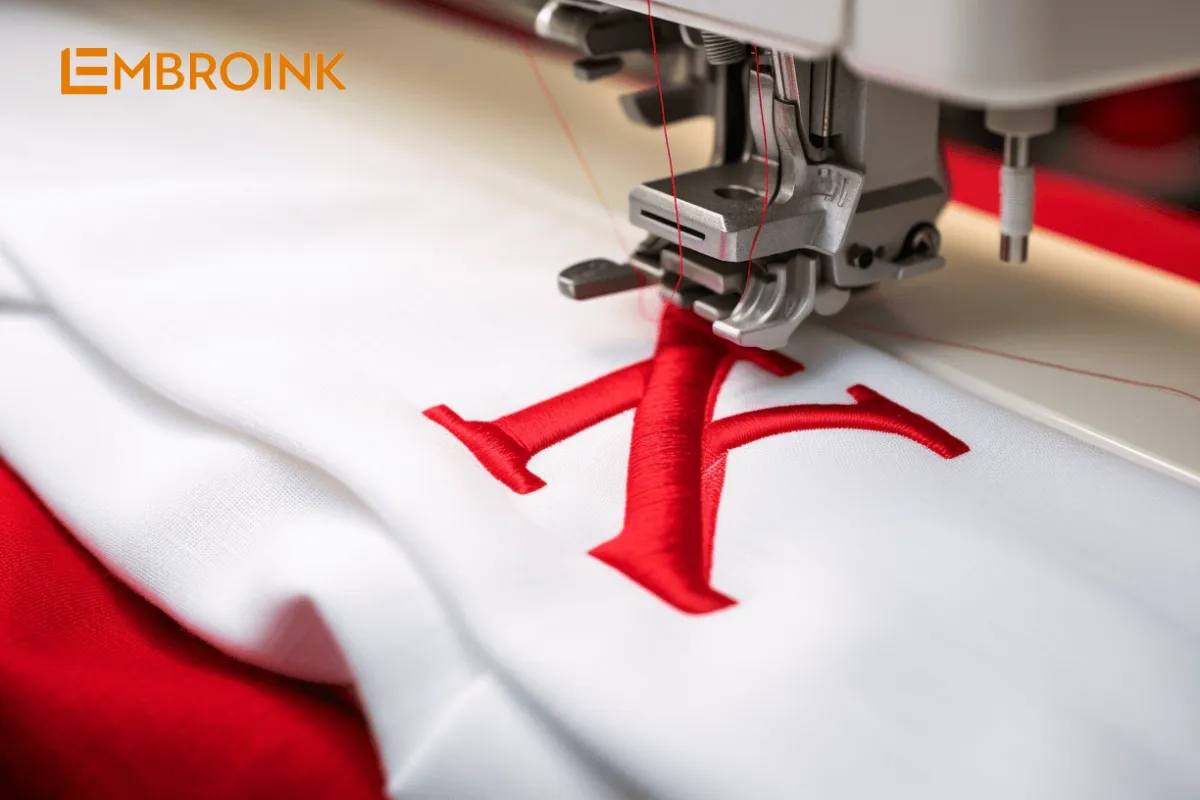
Embroider custom aprons at EmbroInk saves costs
EmbroInk takes pride in being a trusted partner for businesses and enterprises. Over many years of operation, we have fulfilled numerous orders for embroider custom aprons, consistently satisfying customers with both quality and cost-effectiveness.
To serve you best, we embroider aprons ranging from simple to intricate designs, catering to small café logos to upscale restaurant chains. You don’t have to worry about materials or styles when placing an order. With our extensive experience, EmbroInk’s workshop in EmbroInk has selected the most optimal materials and designs.
EmbroInk provides a detailed price list for your reference, facilitating easy decision-making. Feel free to consult with us for specific advice. Please note that while these are reference details, we always offer special discounts to each customer.




